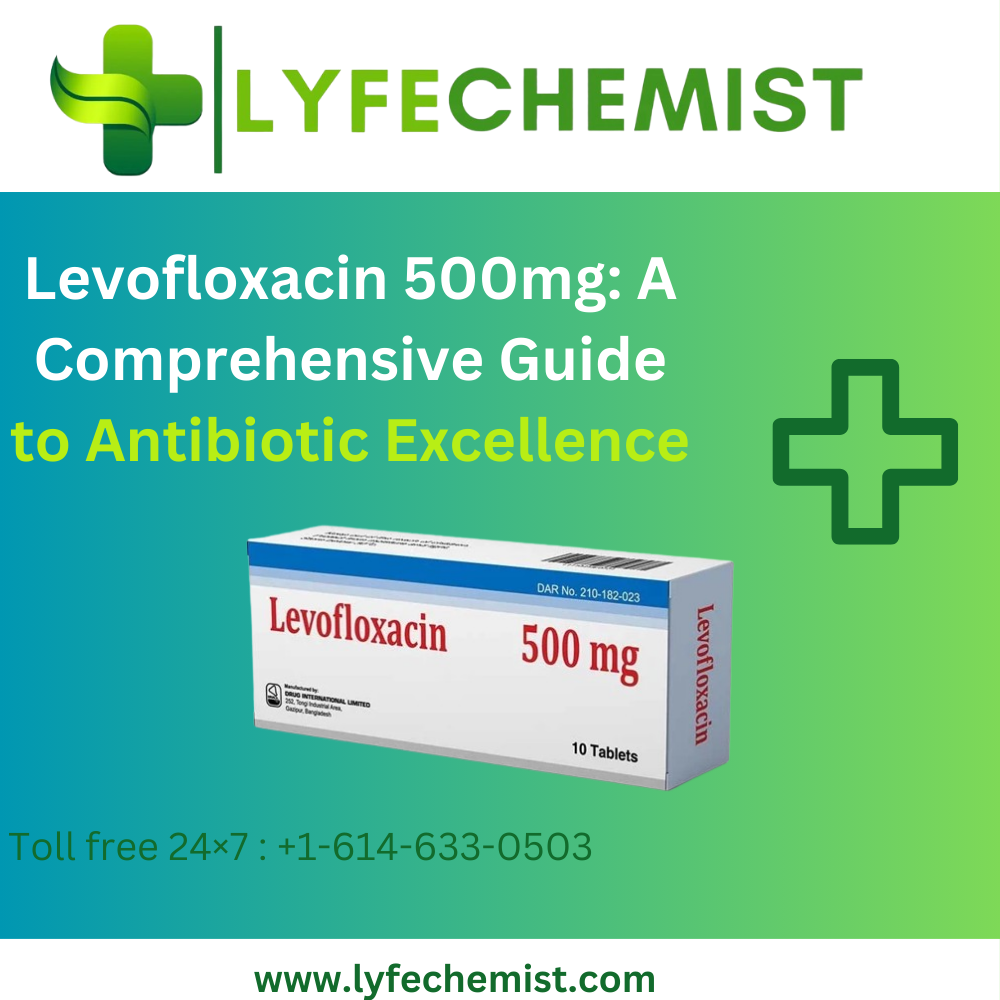
Bacterial skin infections pose a significant health concern worldwide, ranging from mild to severe cases. Among the various treatment options available, Levofloxacin 500 mg has emerged as a potent antibiotic with efficacy against a wide range of bacterial pathogens commonly implicated in skin infections. In this article, we delve into the mechanisms of action of Levofloxacin, its clinical effectiveness, safety profile, and considerations for its use in managing bacterial skin infections.
Understanding Bacterial Skin Infections:
Bacterial skin infections encompass a spectrum of conditions, including cellulitis, impetigo, folliculitis, and abscesses, among others. These infections are typically caused by bacteria such as Staphylococcus aureus, Streptococcus pyogenes, and methicillin-resistant Staphylococcus aureus (MRSA). Factors such as compromised skin integrity, immunosuppression, and environmental exposures can predispose individuals to these infections.
Mechanism of Action of Levofloxacin:
Levofloxacin belongs to the fluoroquinolone class of antibiotics and exerts its bactericidal effects by inhibiting the activity of bacterial topoisomerases, particularly DNA gyrase and topoisomerase IV. By interfering with DNA replication, transcription, and repair processes, Levofloxacin effectively disrupts bacterial growth and replication, leading to bacterial cell death.
Clinical Effectiveness:
Numerous clinical studies have demonstrated the efficacy of Levofloxacin in treating bacterial skin infections. Its broad-spectrum activity, including coverage against both Gram-positive and Gram-negative bacteria, makes it particularly suitable for empirical therapy in suspected skin infections. Furthermore, Levofloxacin exhibits excellent tissue penetration, enabling effective eradication of pathogens at the site of infection.
Safety Profile and Considerations:
While generally well-tolerated, Levofloxacin is associated with potential adverse effects, including gastrointestinal disturbances, central nervous system effects, and tendon disorders. Moreover, the emergence of antibiotic resistance underscores the importance of judicious antibiotic use and adherence to antimicrobial stewardship principles.
Treatment Guidelines:
The appropriate use of Levofloxacin in managing bacterial skin infections involves considerations such as the severity of infection, the suspected causative pathogens, local antimicrobial resistance patterns, and patient-specific factors such as allergies and comorbidities. In mild cases, topical antibiotics or oral agents with narrower spectra may suffice, while severe or complicated infections may warrant broader-spectrum coverage with agents like Levofloxacin.
Conclusion:
Levofloxacin 500mg represents a valuable therapeutic option in the armamentarium against bacterial skin infections. Its potent antibacterial activity, broad spectrum of coverage, and favourable pharmacokinetic profile make it an effective choice for clinicians. However, prudent antibiotic prescribing practices, vigilant monitoring for adverse effects, and efforts to mitigate antibiotic resistance remain paramount in optimising patient outcomes and preserving the efficacy of antibiotics in the management of bacterial skin infections.


